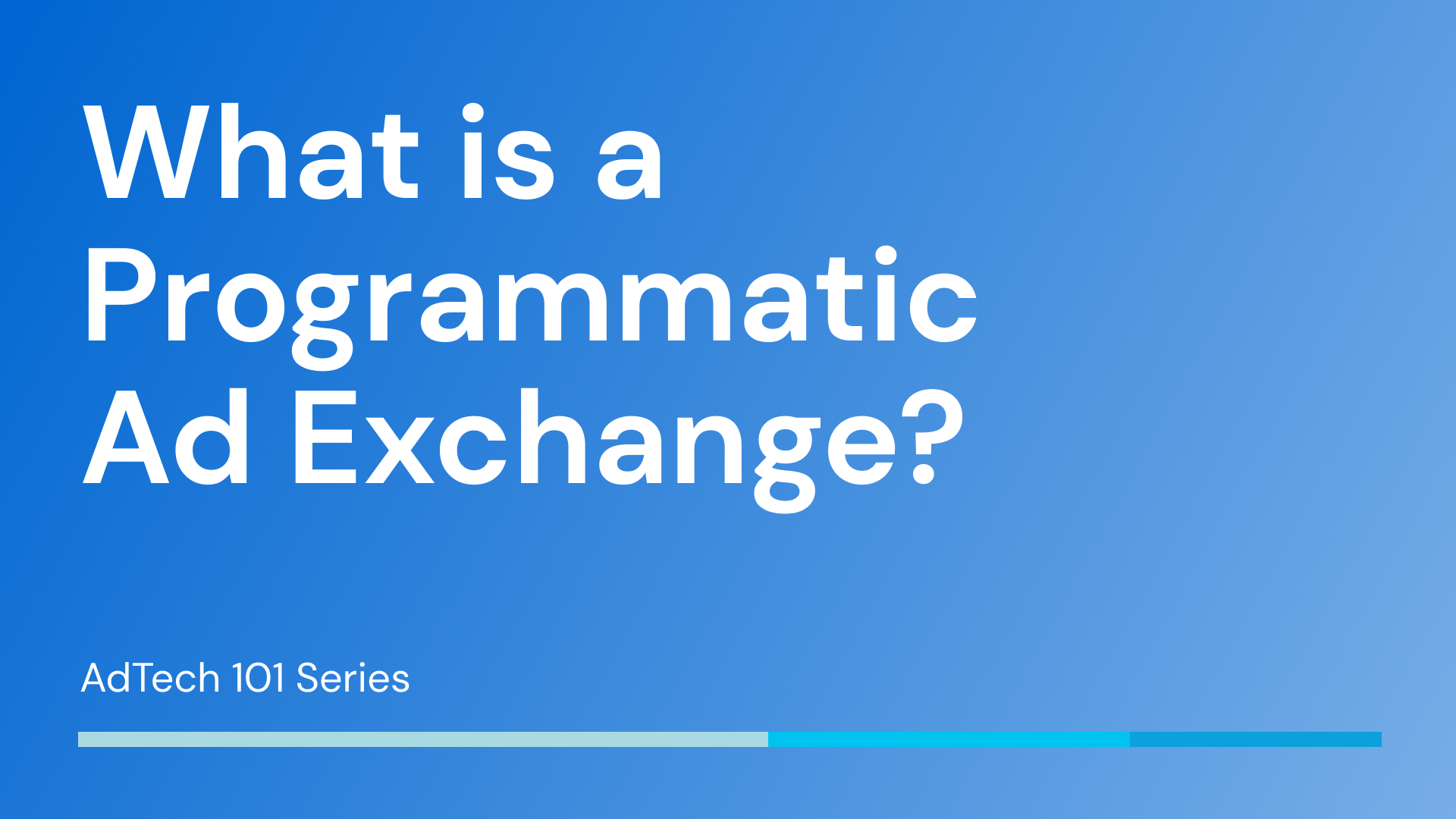Table of Contents
What is a Programmatic Ad Exchange?
A programmatic ad exchange is a digital marketplace that facilitates the buying and selling advertising material in real time through automated processes between advertisers and publishers through real-time bidding. It operates similarly to a stock exchange, but instead of trading stocks, it trades ad impressions.
How Does a Programmatic Ad Exchange Work?
A programmatic ad exchange functions by automating the buying and selling of digital advertising space in real time. Here’s a simplified breakdown of its operation:
Integration: Publishers list their available ad inventory at SSP (supply-side platform). Similarly, advertisers set up their advertising campaigns at DSP (demand side platform)
User visit: When a user visits the website/page, connected SSP sends a bid request via ad exchange to DSP that involves specific information about the viewer, such as their preferences and demographics.
Auction: Connected Ad Exchange conducts an auction, during which advertisers bid for their ads to show, and the highest wins.
Ad Serving: Once the highest bid is determined, ad exchange notifies the SSP that sends out the winning bid’s ad inventory for display on the website.
This entire process happens within the connected platform, in which Ad Exchange acts as a pool of both advertising material and advertising spaces.
Examples of Ad Exchange Platforms
Here are some famous examples of globally-known Ad Exchanges:
Google Ad Exchange (AdX). It is one of the largest and most widely used ad exchanges in the world. It offers real-time bidding and programmatic buying and selling of display, video, and mobile ad inventory across various websites and apps.
OpenX is a leading independent ad exchange that connects publishers with advertisers through real-time bidding and private marketplace deals. It provides a range of ad formats, including display, video, and mobile.
Rubicon Project (now Magnite). Rubicon Project, now part of Magnite, operates one of the largest independent ad exchanges globally. It facilitates programmatic advertising transactions across desktop, mobile, video, and connected TV platforms.
Ad Network vs Ad Exchange
The difference between the two is that an ad exchange acts as a marketplace for both sides of digital advertising. At the same time, an ad network performs as a middleman between the two. This means that while ad exchange publishers sell their ad inventory directly to the advertisers via SSP and DSP, an ad network, the platform performs the function of a seller that aggregates and sells the advertising material.
Therefore, ad exchanges offer several advantages over networks, including transparency, control, and real-time bidding. On the other hand, ad networks may provide convenience due to accumulating ad inventory from multiple publishers, along with reliability.
What is White Label Ad Exchange?
A white-label ad exchange is an ad exchange platform that can be customized and branded by a third-party company, known as the reseller or licensee. This setup enables companies to buy or license the ad exchange technology and infrastructure that rebrands it to match their own identity. The benefits of using WLS include brand control, customization, and time-cost efficiency.
If you are interested in acquiring one of Bidscube’s White Label products, you can get in touch with one of our professionals.
FaQ
Does ad exchange work directly with the publishers or advertisers?
Both advertisers and publishers require a DSP and SSP, respectively, in order to be compliant with an exchange.
Is SSP and ad exchange the same?
No. SSP (supply-side platform) is responsible for gathering ad inventory from publishers. In contrast, ad exchange acts as a pool of inventory from both advertisers and publishers that connect to exchanges via SSP and DSP platforms.
What targeting options are available on ad exchanges?
Advertisers can target their ads based on various criteria, including demographics, geography, interests, browsing behavior, and device type. Advanced targeting options may include contextual targeting, retargeting, and audience segmentation.
This Article's Ad Tech terms

